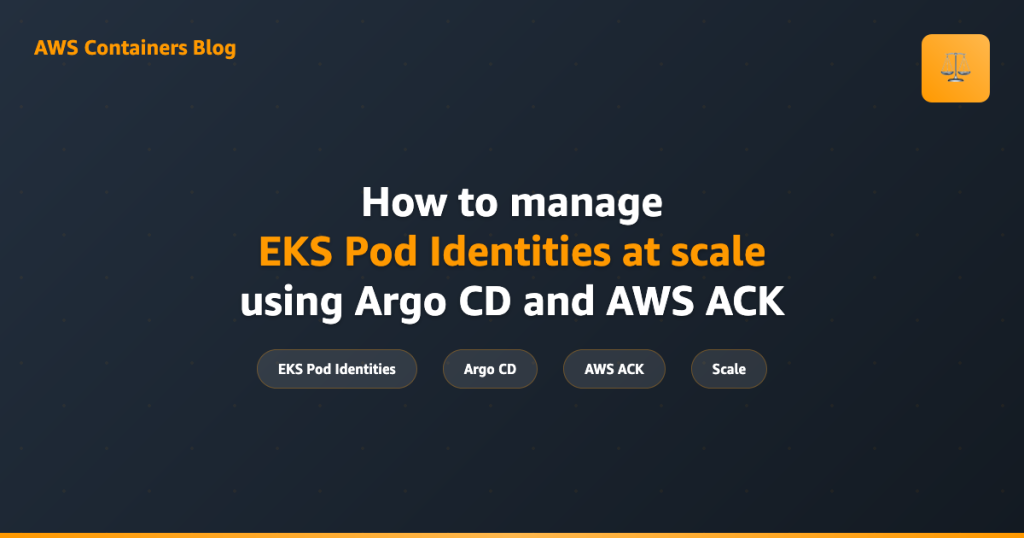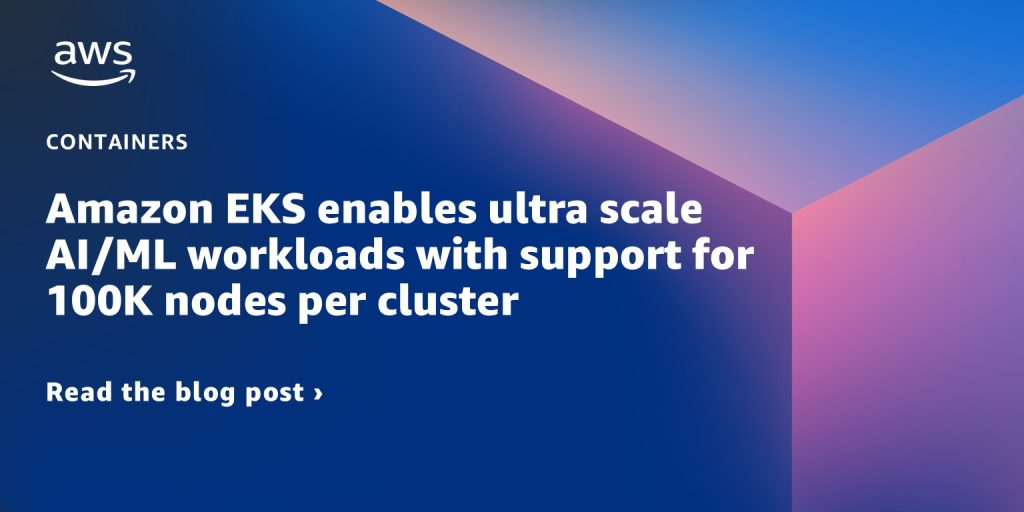Containers
Tag: Amazon Elastic Kubernetes Service (Amazon EKS)
Amazon EKS introduces Provisioned Control Plane
Amazon EKS introduces Provisioned Control Plane, a new capability that allows you to pre-allocate control plane capacity for predictable, high-performance Kubernetes operations at scale. In this post, we explore how this enhanced option complements the Standard Control Plane by offering multiple scaling tiers (XL, 2XL, 4XL) with well-defined performance characteristics for API request concurrency, pod scheduling rates, and cluster database size—enabling you to handle demanding workloads like ultra-scale AI training, high-performance computing, and mission-critical applications with confidence.
Monitoring network performance on Amazon EKS using AWS Managed Open-Source Services
In this post, we demonstrate how to monitor network performance for Amazon EKS workloads using new advanced network observability features powered by Network Flow Monitor. We explore how to capture Kubernetes-enriched network metrics, export them to AWS Managed Open-Source services like Amazon Managed Service for Prometheus and Amazon Managed Grafana, and visualize critical performance indicators including throughput, packet drops, latency, and connection states across your containerized services.
Extending EKS with Hybrid Nodes: IAM Roles Anywhere and HashiCorp Vault
In this post, we explore how to use AWS Identity and Access Management (IAM) Roles Anywhere, supported by HashiCorp Vault PKI, to facilitate joining EKS Hybrid Nodes to an Amazon EKS Cluster. This solution enables businesses to flexibly make use of compute resources outside of AWS by extending an Amazon Elastic Kubernetes Service (Amazon EKS) data plane beyond the AWS Cloud boundary, addressing use cases focused on data sovereignty, low latency communication, and regulatory compliance.
How to manage EKS Pod Identities at scale using Argo CD and AWS ACK
In this post, we explore how to manage EKS Pod Identity associations at scale using Argo CD and AWS Controllers for Kubernetes (ACK), addressing the critical challenge of the eventually consistent EKS Pod Identity API. The guide demonstrates automation techniques to ensure proper IAM role associations before application deployment, maintaining GitOps workflows while preventing permission-related failures.
Under the hood: Amazon EKS ultra scale clusters
This post was co-authored by Shyam Jeedigunta, Principal Engineer, Amazon EKS; Apoorva Kulkarni, Sr. Specialist Solutions Architect, Containers and Raghav Tripathi, Sr. Software Dev Manager, Amazon EKS. Today, Amazon Elastic Kubernetes Service (Amazon EKS) announced support for clusters with up to 100,000 nodes. With Amazon EC2’s new generation accelerated computing instance types, this translates to […]
Amazon EKS enables ultra scale AI/ML workloads with support for 100K nodes per cluster
We’re excited to announce that Amazon Elastic Kubernetes Service (Amazon EKS) now supports up to 100,000 worker nodes in a single cluster, enabling customers to scale up to 1.6 million AWS Trainium accelerators or 800K NVIDIA GPUs to train and run the largest AI/ML models. This capability empowers customers to pursue their most ambitious AI […]
Deep Dive: Amazon EKS Dashboard for Visibility into Multi-Cluster Operations and Governance
This blog post was jointly authored by Carlos Santana, Sr. Solution Architect, Containers; Sriram Ranganathan, Sr. Product Manager, Kubernetes; Sabari Sawant, Product Marketing Manager, Kubernetes; and Frank Carta, Sr. GTM specialist, Containers. As organizations grow their Kubernetes infrastructure across AWS Regions and accounts, they face increasing challenges in maintaining oversight of their Kubernetes clusters. Without […]
Accelerating application development with the Amazon EKS MCP server
This blog post was jointly authored by Niall Thomson, Principal Solutions Architect – Containers, Carlos Santana, Solutions Architect – Containers and George John, Senior Product Manager – Amazon EKS Introduction Today, we’re excited to announce the launch of the open source Model Context Protocol (MCP) server for Amazon Elastic Kubernetes Service (Amazon EKS). This new […]
Managing Team Workloads in shared Amazon EKS cluster using Loft vCluster and Argo CD for better cost optimization and operational efficiency
This blog was authored by Adam Issaoui, Cloud Support Engineer – Containers, Asif Khan, Senior Solutions Architect, and Sébastien Allamand, Sr. Solution Architect Specialist – Containers. Introduction Amazon Elastic Kubernetes Service (Amazon EKS) has emerged as a fundamental platform for modern container orchestration. It enables organizations to effectively optimize their application deployment and management processes […]
Analyzing Java applications performance with async-profiler in Amazon EKS
This blog was authored by Sascha Möllering, Principal Specialist Solutions Architect Containers and Yuriy Bezsonov, Senior Partner Solutions Architect. Introduction Container startup performance presents a significant challenge for Java applications running on Kubernetes, particularly during scaling events and recovery scenarios. Although Java remains a top choice for both legacy modernization and new microservices development, especially […]









